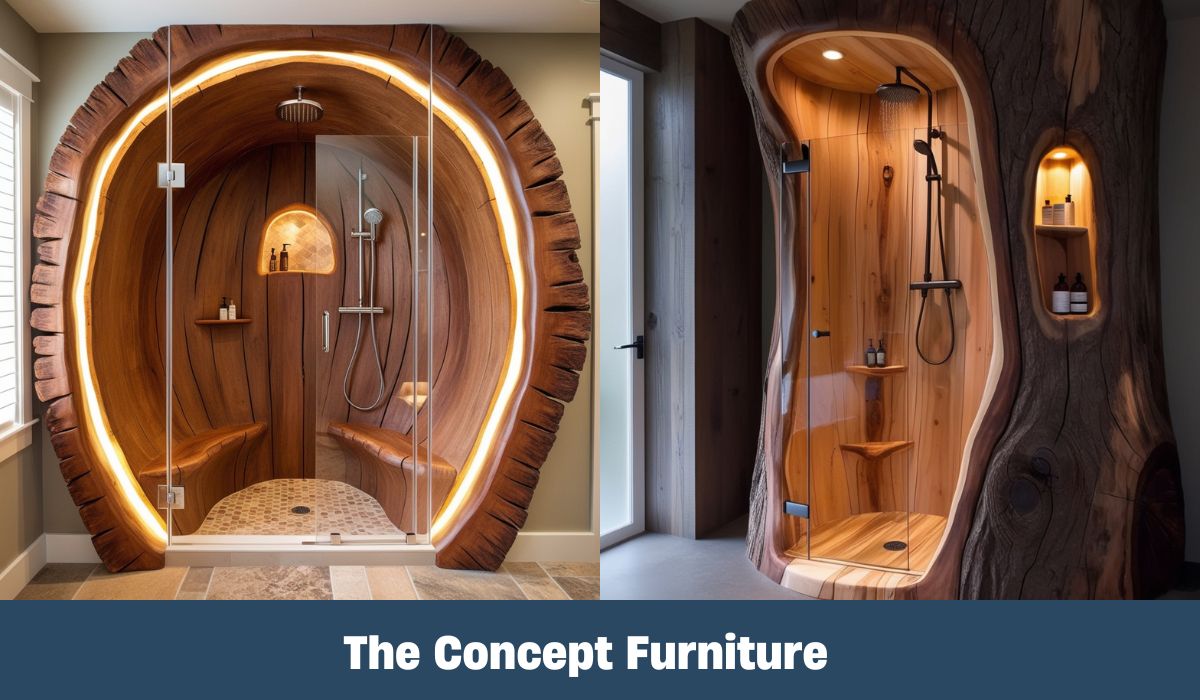Tree trunk showers are an innovative and unique way to create an outdoor bathing experience that blends seamlessly with nature. These structures not only provide a practical solution for enjoying the outdoors but also serve as stunning focal points in gardens, backyards, or even by the poolside. The beauty of tree trunk showers lies in their organic design, which invites individuals to reconnect with nature while indulging in the soothing sensation of water cascading down from a wooden structure. This article will explore various aspects of tree trunk showers, including design inspirations, benefits, materials needed, and maintenance tips.
Introduction to Tree Trunk Showers
The allure of utilizing wood as a primary material in outdoor spaces has grown significantly over the years. With the rise of eco-friendly living, homeowners are increasingly looking for ways to incorporate natural elements into their surroundings. Among the various applications of wood, tree trunk showers stand out as a charming option that brings together functionality and aesthetic appeal.
Tree trunk showers can be built around existing trees, using their sturdy trunks as supports, or constructed entirely from reclaimed wood to emphasize sustainability. These structures allow for creativity in design, providing an opportunity to blend rustic charm with contemporary style. Many people find that creating an outdoor shower is a great way to enhance their backyard experience, especially during hot summer months when a cool shower can be immensely refreshing.
The rising popularity of tree trunk showers is also influenced by their environmental benefits. By embracing natural materials, homeowners can significantly reduce their ecological footprint while creating a unique space that offers both beauty and utility. In this exploration, we will delve deeper into the design inspirations, advantages, and practicalities of constructing your own tree trunk shower.
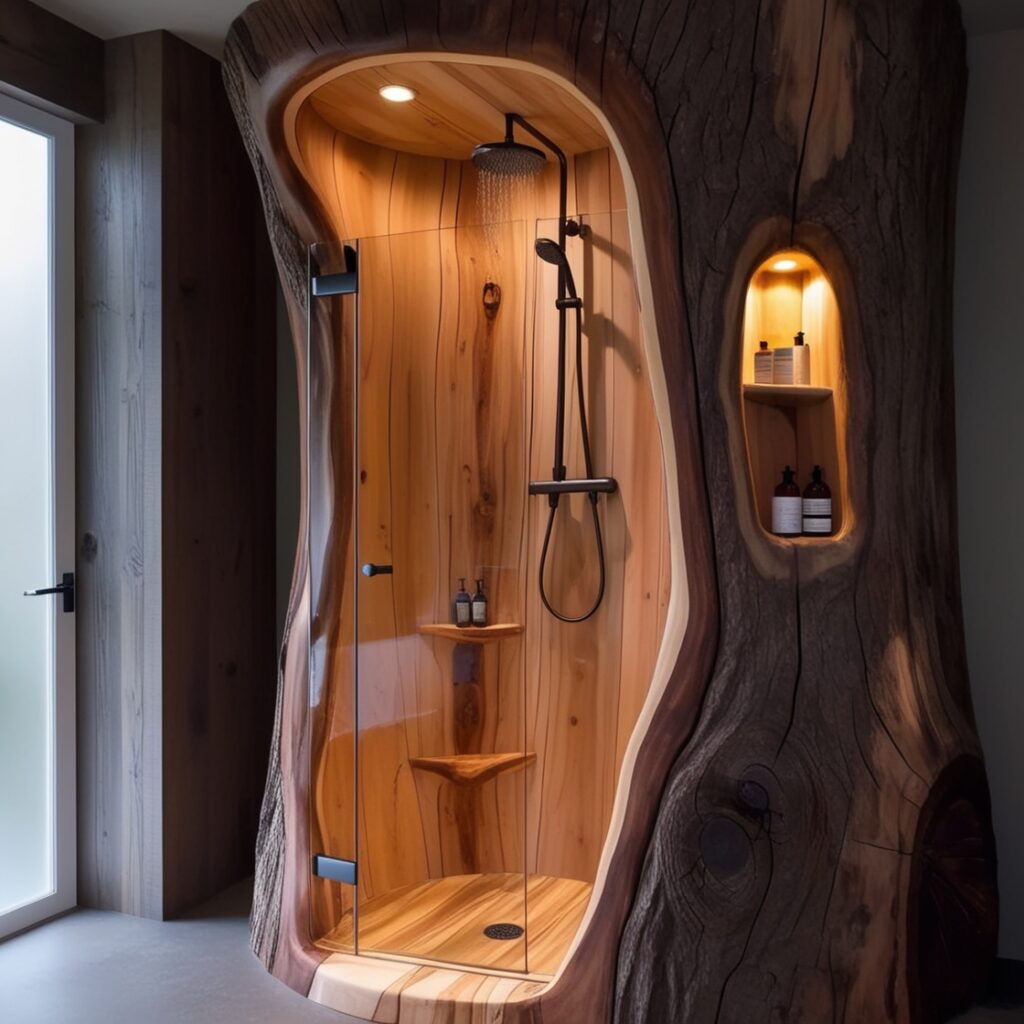
Design Inspirations for Tree Trunk Showers
When it comes to designing a tree trunk shower, there are endless possibilities to consider. Various design inspirations can help you create an inviting and picturesque outdoor bathing area. Incorporating elements of nature, rustic themes, and modern touches can make your tree trunk shower a true haven in your garden or yard.
Natural Aesthetics in Outdoor Spaces
Nature has a way of inspiring creativity, and incorporating natural aesthetics into your tree trunk shower’s design can create a harmonious atmosphere. Using the contours and textures of wood highlights the organic beauty of the environment. Adding features such as stone pathways, lush greenery, and flowering plants can further enhance the overall ambiance.
Consider using boulders or river stones as part of the flooring to connect the shower with its natural surroundings. Additionally, opting for an overhead arbor made from branches or vines can create a shaded area while allowing light to filter through. You can also incorporate native plants around the shower to attract local wildlife and pollinators.
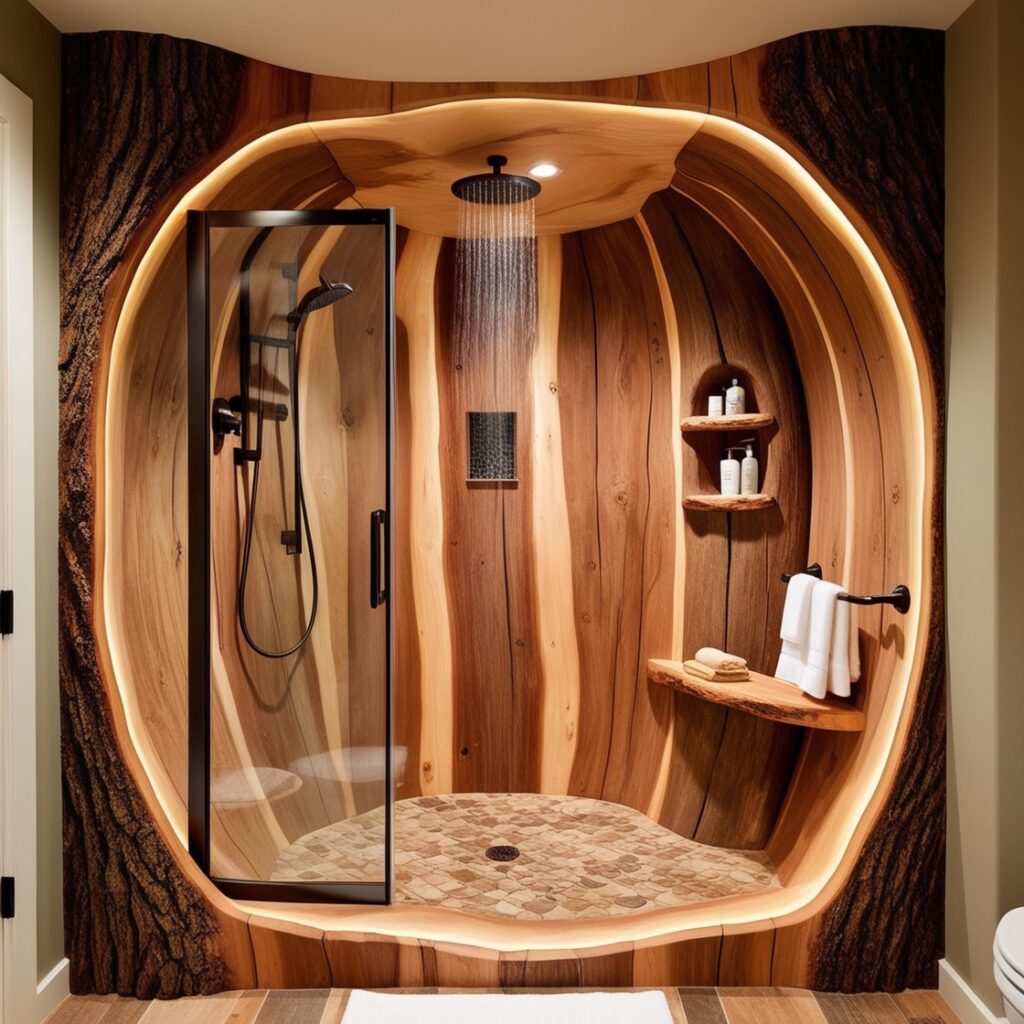
Incorporating natural colors and finishes, such as earthy browns and greens, adds warmth and depth to the area. Ultimately, the goal is to create a seamless transition between the man-made structure and the natural world, allowing users to feel immersed in their surroundings.
Rustic Themes and Modern Touches
While tree trunk showers naturally lend themselves to rustic designs, combining traditional elements with modern touches can yield striking results. Think about incorporating sleek metal fixtures or glass accents that juxtapose the ruggedness of the wood. This contrast can elevate the design, giving it a contemporary flair while still maintaining the essence of the outdoors.
Using reclaimed wood in the construction of your shower not only emphasizes sustainability but also brings character and history to the design. Pairing vintage elements like wrought-iron hooks for towels or antique-style faucets can infuse a sense of nostalgia into your outdoor oasis.
Lighting is another crucial aspect of your design. Consider adding solar-powered lanterns or string lights to create a magical atmosphere at night. The interplay of natural and artificial light will enhance the space’s overall appeal, making it a perfect spot for relaxation and unwinding after a long day.
Benefits of Installing a Tree Trunk Showers
Installing a tree trunk shower has numerous benefits that go beyond aesthetics. From promoting sustainability to enhancing outdoor living spaces, these unique structures can transform your backyard into a personal sanctuary. Below are some noteworthy advantages of having a tree trunk shower.
Eco-Friendly Water Solutions
One of the most compelling reasons to consider a tree trunk shower is their environmentally friendly potential. Utilizing rainwater collection systems allows for efficient water usage, significantly reducing reliance on municipal water supplies. This sustainable approach not only lowers water bills but also promotes responsible conservation practices.
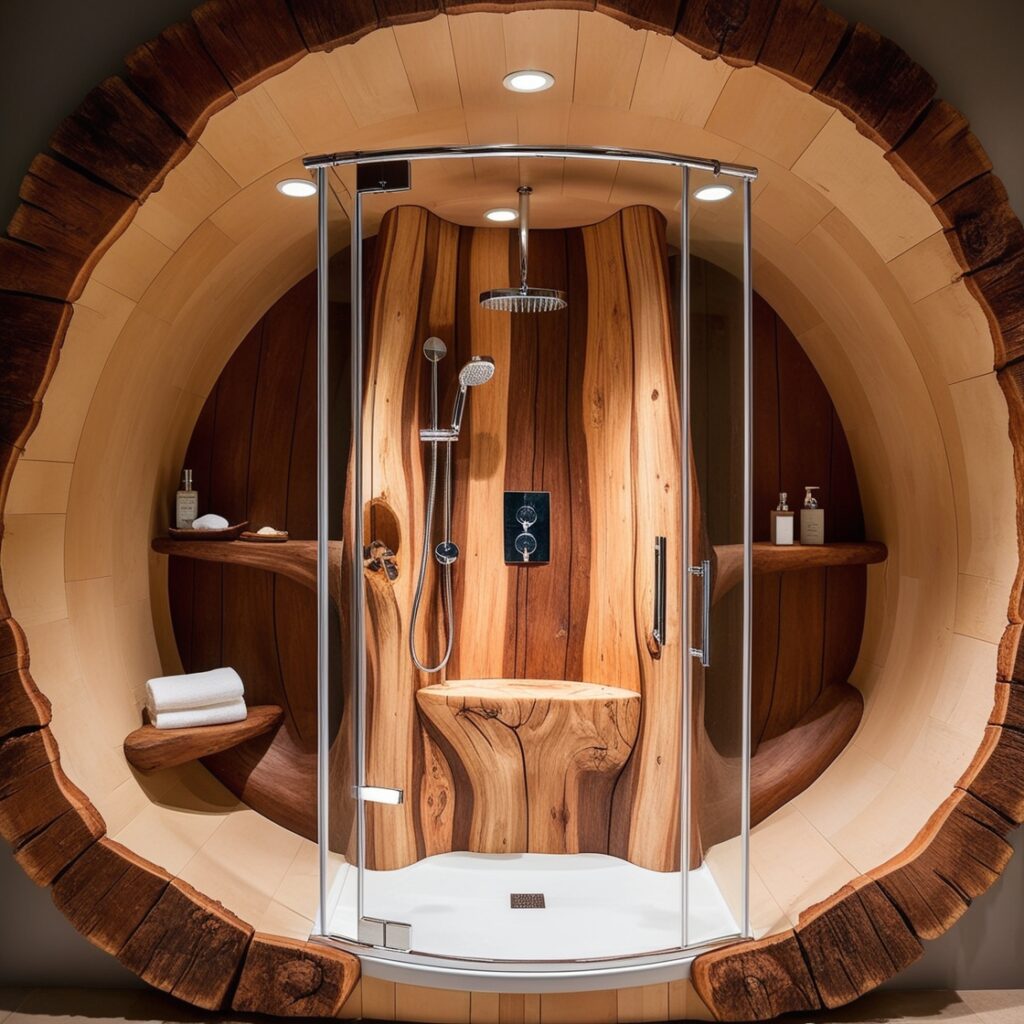
Additionally, the use of reclaimed wood in construction contributes to minimizing deforestation and reducing waste. By repurposing materials, you aid in preserving the planet’s resources while adding uniqueness to your structure. Embracing eco-friendly practices contributes to the growing movement of conscious living and sets an excellent example for others in your community.
Enhancing Outdoor Living Areas
The addition of a tree trunk shower can significantly enhance your outdoor living areas by providing a functional space for enjoyment and relaxation. Whether you spend leisurely afternoons soaking under the sun or enjoy a refreshing rinse after swimming, a tree trunk shower becomes an essential element of your outdoor lifestyle.
Moreover, these showers can encourage family and friends to spend more time outdoors, creating memorable experiences together. Hosting outdoor gatherings, barbecues, or pool parties becomes more appealing when guests have access to an inviting shower. A well-designed tree trunk shower can become a centerpiece that inspires conversations and fond memories.
Choosing the Right Location for Your Tree Trunk Showers
Selecting the ideal location for your tree trunk shower is crucial for maximizing its efficiency and aesthetic appeal. Several factors come into play when determining the best spot for installation, ranging from sunlight exposure to proximity to existing water sources.
Factors to Consider: Sunlight and Drainage
Sunlight plays a vital role in the longevity and usability of your tree trunk shower. A well-lit area will help keep the structure dry and minimize the risk of mold and mildew developing on the wood. When choosing a location, look for spots that receive ample sunlight throughout the day but also offer shade for comfortable use during peak hours.
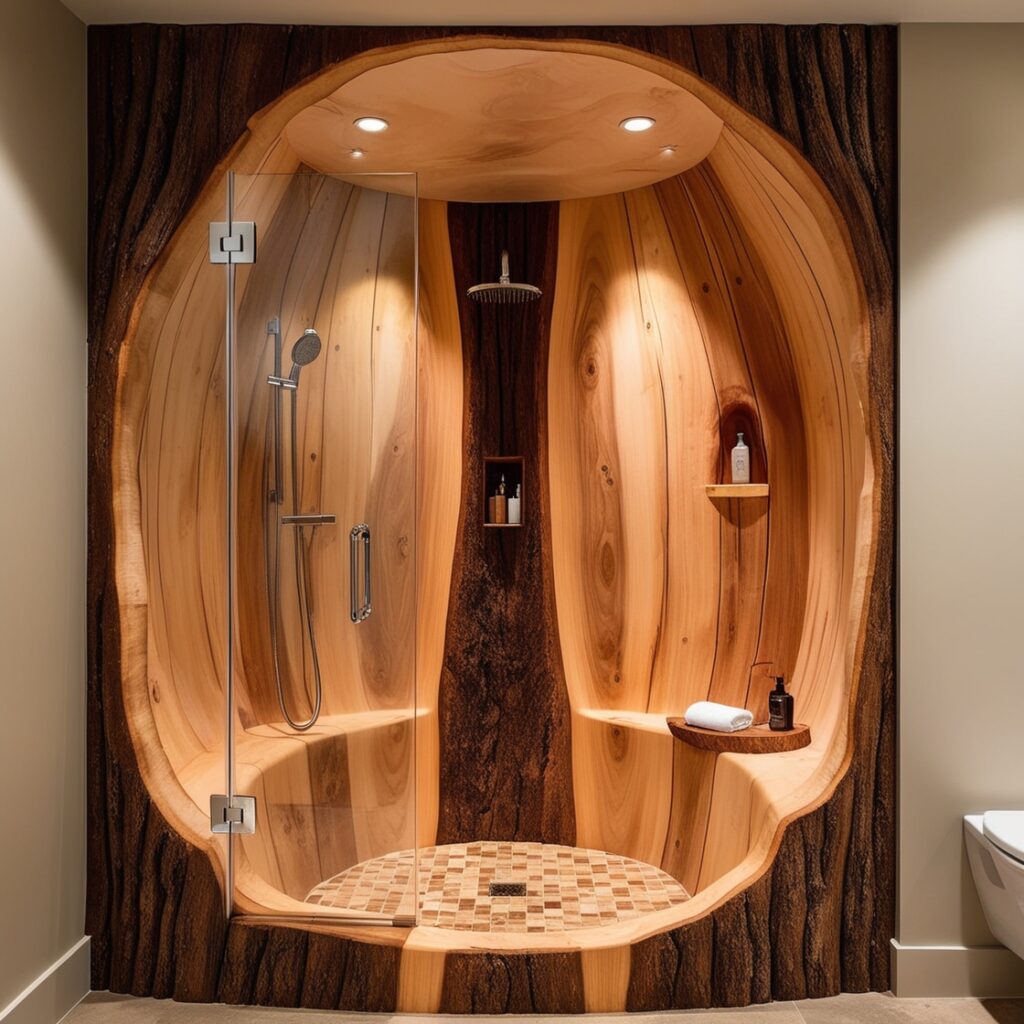
Equally important is drainage. Proper drainage prevents water from pooling around the base of the shower, which could lead to structural damage and erosion over time. Evaluate the slope of your yard and choose a location where water can flow away from the shower area. If necessary, consider installing a drainage system to ensure optimal performance.
Proximity to Existing Water Sources
Installing your tree trunk shower close to existing water sources simplifies the plumbing process and reduces installation costs. Identify nearby hoses, spigots, or irrigation systems that can supply water to the shower. This accessibility allows for easier maintenance and could even enable you to use greywater from your home if desired.
Additionally, consider how the shower fits within the overall layout of your outdoor space. Ensure that it complements other landscaping features while also providing convenience for users. Including thoughtful planning in this stage will set the foundation for your future enjoyment of the shower.
Materials Needed for Building a Tree Trunk Showers
Building a tree trunk shower requires the right materials to ensure durability, safety, and aesthetic appeal. Selecting high-quality components will lead to a structure that withstands the elements while harmonizing beautifully within its surroundings.
Types of Wood and Treatments
When choosing wood for your tree trunk shower, opt for species known for their resilience to moisture and decay. Cedar, redwood, and teak are popular choices due to their natural resistance to rot, insects, and weather-related damage. Incorporating reclaimed wood adds character and sustainability to the project, although be sure to inspect it thoroughly for signs of deterioration.
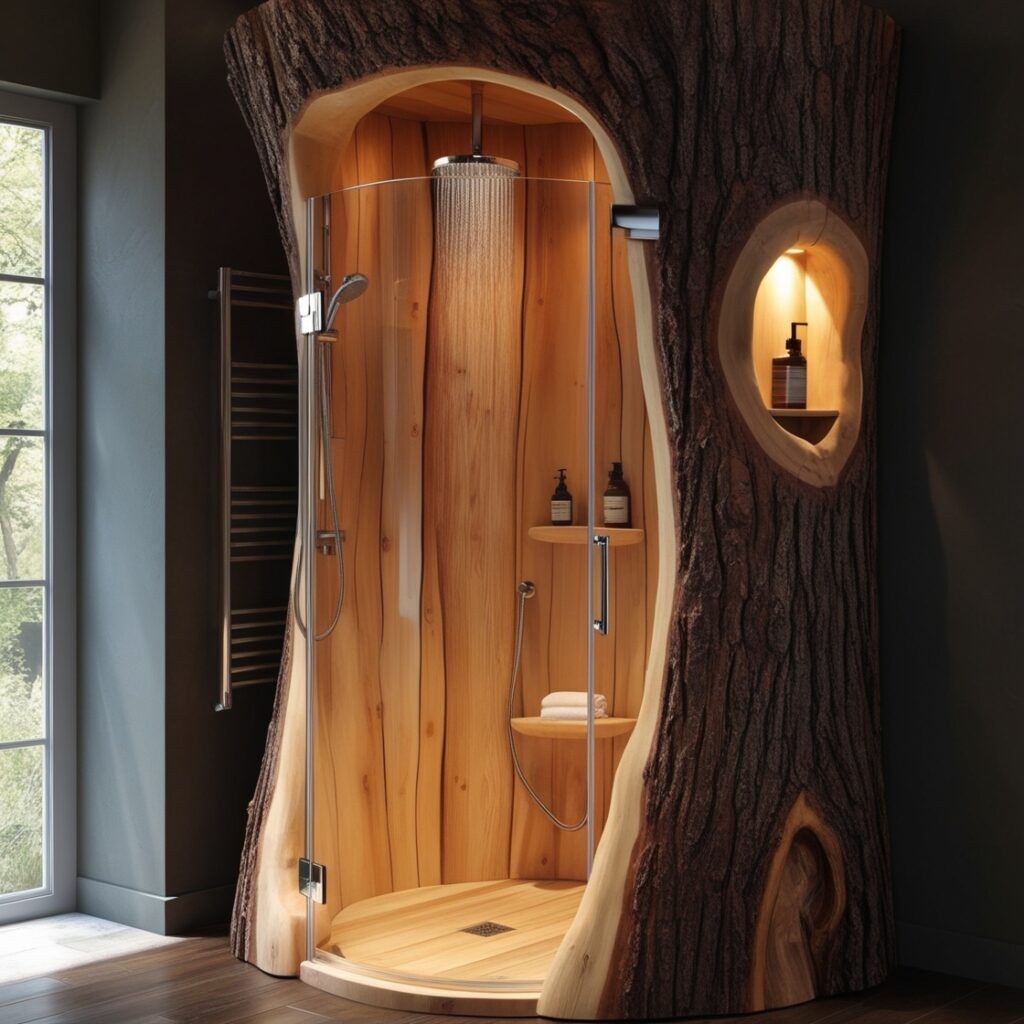
In addition to selecting the right type of wood, employing proper treatments and sealants is essential. Applying a waterproof sealant protects the wood from absorbing moisture and prolongs its lifespan. Look for eco-friendly products that align with your commitment to sustainability. Regularly reapplying treatments will maintain the beauty and integrity of your tree trunk shower.
Plumbing Essentials
Proper plumbing is key to ensuring your tree trunk shower functions efficiently. Start by connecting to a reliable water source—whether that’s tapping into existing plumbing or utilizing a rain barrel. Install pipes and fixtures designed for outdoor use to handle fluctuations in temperature and exposure to the elements.
Don’t forget essential components like a showerhead, faucet, and drain. Select fixtures that complement your design while being durable enough to withstand outdoor conditions. Consult with professional plumbers if you’re unsure about any aspect of the installation process to ensure a seamless experience.
Step-by-Step Guide to Building a Tree Trunk Showers
Constructing a tree trunk shower can be a rewarding DIY project that allows you to express your creativity while enjoying the satisfaction of building something unique. Follow this step-by-step guide to bring your vision to life.
Preparing the Site
Begin by preparing the site for your tree trunk shower. Clear the area of debris, rocks, and vegetation to create a clean workspace. It may be helpful to mark the outline of your shower with stakes and string to visualize its size and shape.
Next, assess the ground’s stability and make necessary adjustments. For uneven terrain, consider leveling the surface or creating a solid foundation using gravel or pavers. Ensuring that the base is stable will prevent sinking or shifting of the structure over time.
Constructing the Shower Frame
With the site prepared, it’s time to construct the shower frame. Start by anchoring the tree trunk securely to prevent movement. Use brackets or bolts to fasten the frame to the trunk, ensuring it can support the weight of the shower structure.
Once the trunk is secured, build the surrounding framework using your selected wood. Assemble the walls, roof, and any additional features you desire, such as shelving or hooks. Take care to maintain a consistent level and alignment throughout the process. Finally, install the plumbing components and showerhead, making sure everything is functional before finishing the outer surfaces.
Maintenance Tips for Tree Trunk Showers
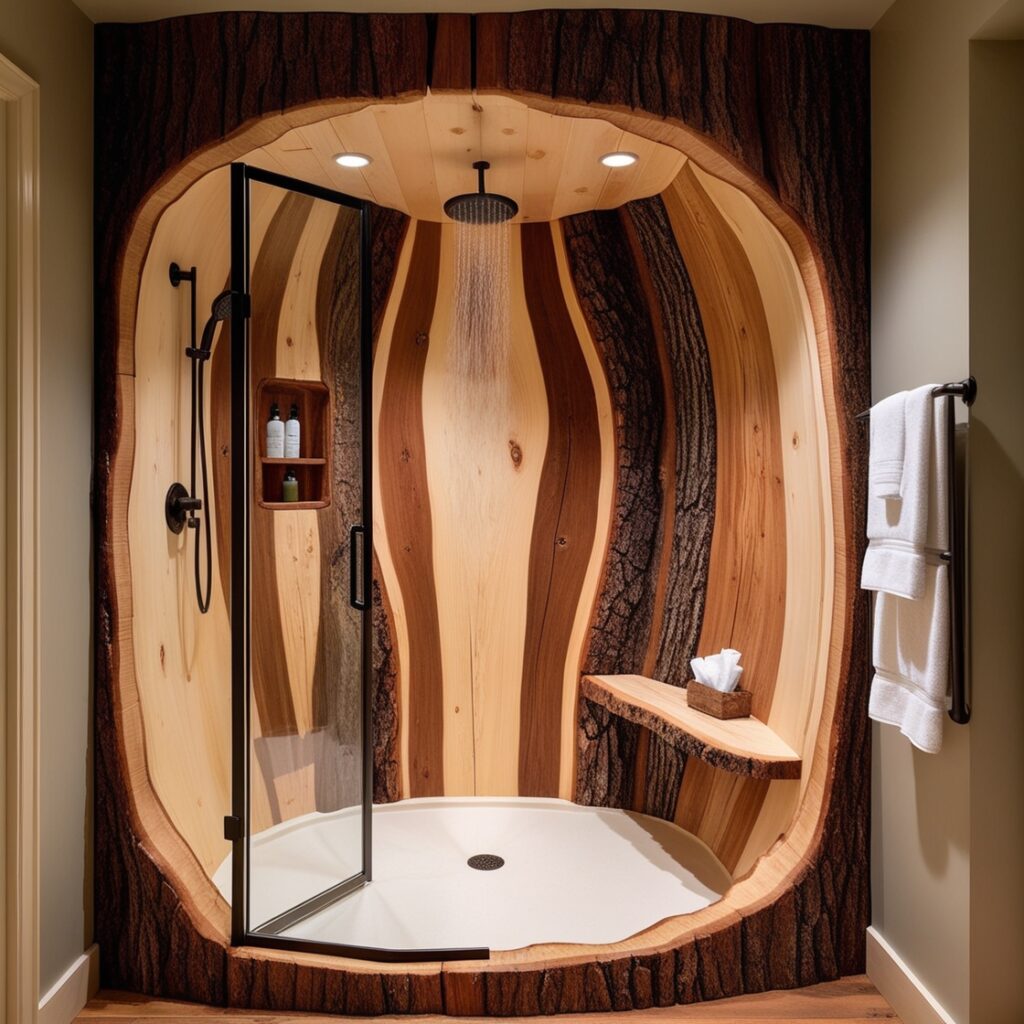
To preserve the beauty and functionality of your tree trunk shower, regular maintenance is essential. Implementing cleaning routines and seasonal care will extend your shower’s lifespan while ensuring a pleasant user experience.
Regular Cleaning Routines
Establish a regular cleaning routine to remove debris, soap scum, and mineral buildup that may accumulate over time. Use gentle, eco-friendly cleaners specifically designed for wood surfaces. A soft brush or cloth can effectively lift dirt without damaging the wood.
Pay special attention to the drain area, ensuring that no clogs or blockages occur. Clearing leaves and debris from the vicinity will also help mitigate potential issues. By dedicating time to routine cleaning, you can maintain the beauty of your tree trunk shower while preventing costly repairs down the line.
Seasonal Care for Wooden Structures
Seasonal care is particularly important for wooden structures, as climate changes can affect their durability. During harsher seasons, inspect your tree trunk shower for signs of wear and tear. Reapply sealants as necessary to protect against moisture and UV damage.
In colder climates, consider winterizing your shower by draining water lines and covering exposed components to safeguard against freezing temperatures. Come spring, again assess the structure for any needed repairs before resuming use. Taking proactive steps to care for your shower will ensure that it remains a cherished feature of your outdoor space for years to come.
Mistakes to Avoid
Even with the best intentions, mistakes can arise during the planning and construction phases of a tree trunk shower. Being aware of common pitfalls can save you time, money, and frustration in the long run.
Ignoring Local Regulations

Before embarking on your tree trunk shower project, familiarize yourself with local regulations regarding outdoor structures and plumbing. Some municipalities may require permits or adhere to specific codes that must be followed. Neglecting to comply with these regulations could result in fines or the need to dismantle your shower.
Researching zoning laws and building codes ensures that your construction adheres to safety standards while avoiding complications down the line. Consulting with local authorities or professionals can facilitate the permit process and provide valuable insights.
Neglecting Proper Drainage Solutions
Poor drainage can lead to significant problems for your tree trunk shower, potentially compromising its structural integrity. Be sure to incorporate adequate drainage solutions during the planning phase, as overlooking this aspect could result in flooding or pooling water near the base.
Evaluate the slope of your yard and devise a plan to direct water away from the shower area. Installing proper drainage systems or using permeable materials will help maintain a dry environment around your shower. This foresight can save time and resources in dealing with future water-related issues.
Frequently Asked Questions
As interest in tree trunk showers continues to grow, many people have questions relating to their construction, maintenance, and overall feasibility. Here are some commonly asked queries:
How long will a tree trunk shower last?
The lifespan of a tree trunk shower largely depends on the quality of materials used, the methods of construction, and the level of maintenance performed. High-quality wood, coupled with proper treatments and regular upkeep, can extend the longevity of your shower significantly. Many homeowners report enjoying their tree trunk showers for several decades with the right care.
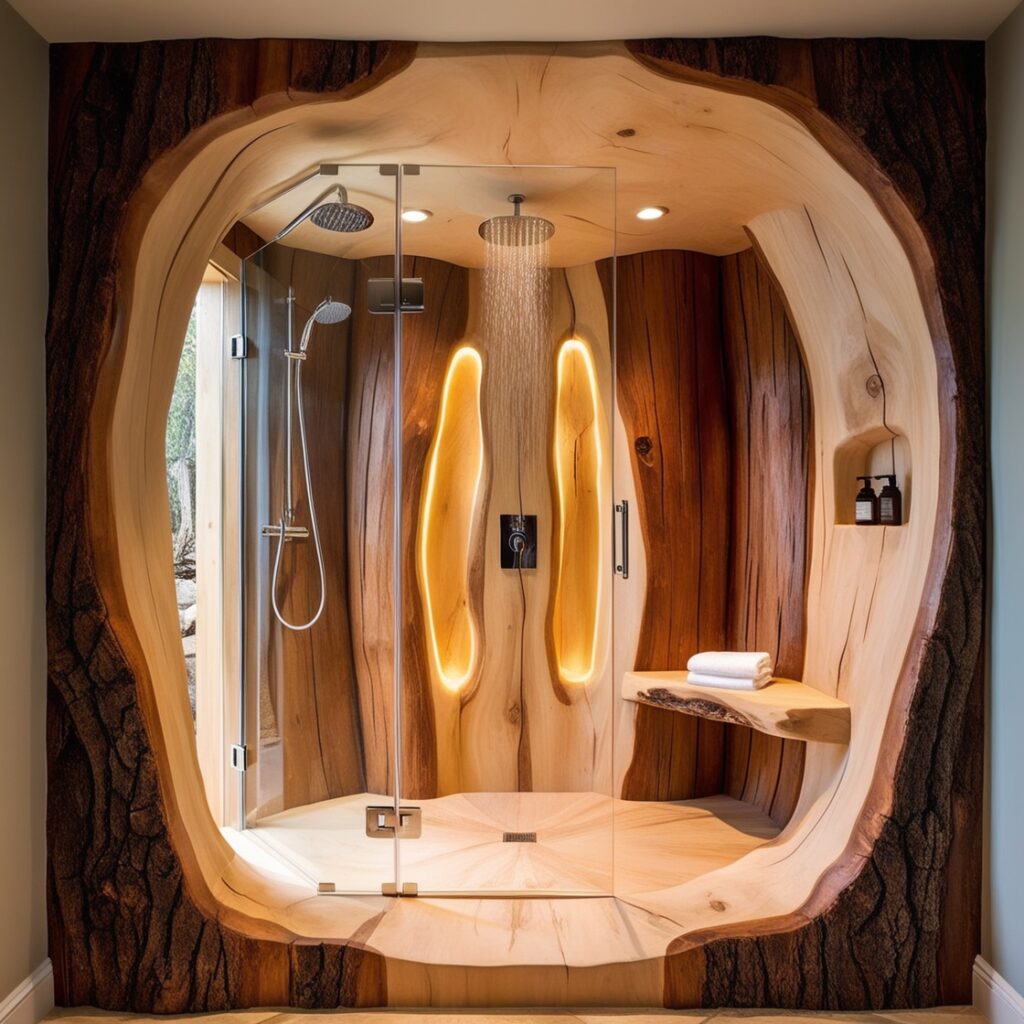
Can I build a tree trunk shower without professional help?
Yes! Building a tree trunk shower can be a rewarding DIY project for those with basic carpentry skills and a willingness to learn. However, consulting with a professional plumber or contractor can provide invaluable guidance, particularly in relation to plumbing and local regulations. Having a good plan and understanding of the materials involved will empower you to create a beautiful and functional outdoor shower.
Conclusion
Tree trunk showers offer a delightful fusion of functionality and aesthetics, creating an outdoor oasis that allows individuals to immerse themselves in nature while enjoying the comforts of modern living. Through thoughtful design, careful planning, and diligent maintenance, your tree trunk shower can become a cherished feature in your outdoor space. Whether seeking a tranquil retreat or a lively gathering place, this unique structure can elevate your outdoor experience and promote a deeper connection with the natural world. Embrace the beauty and sustainability of tree trunk showers, and let them inspire your journey toward an enriched outdoor lifestyle.

